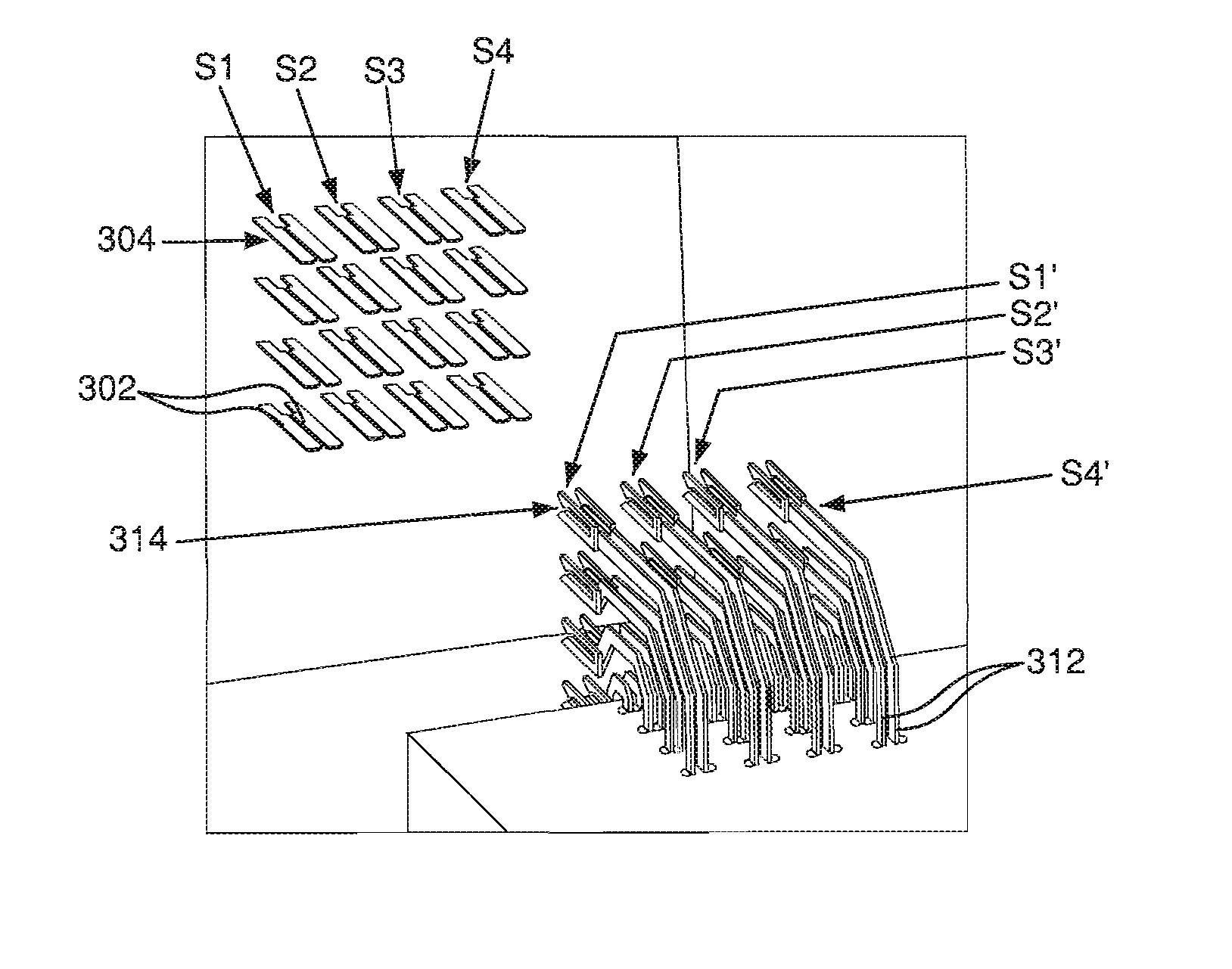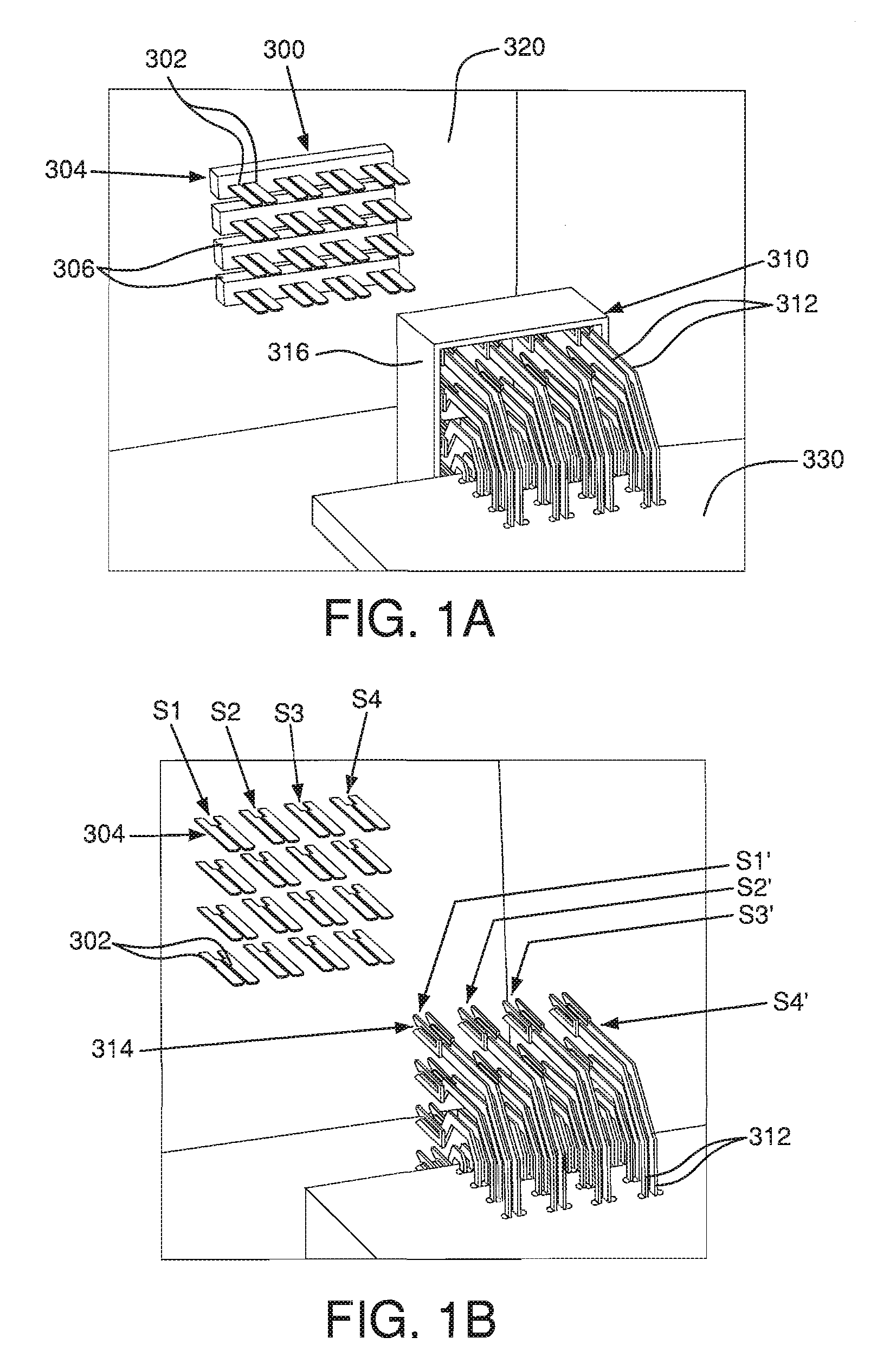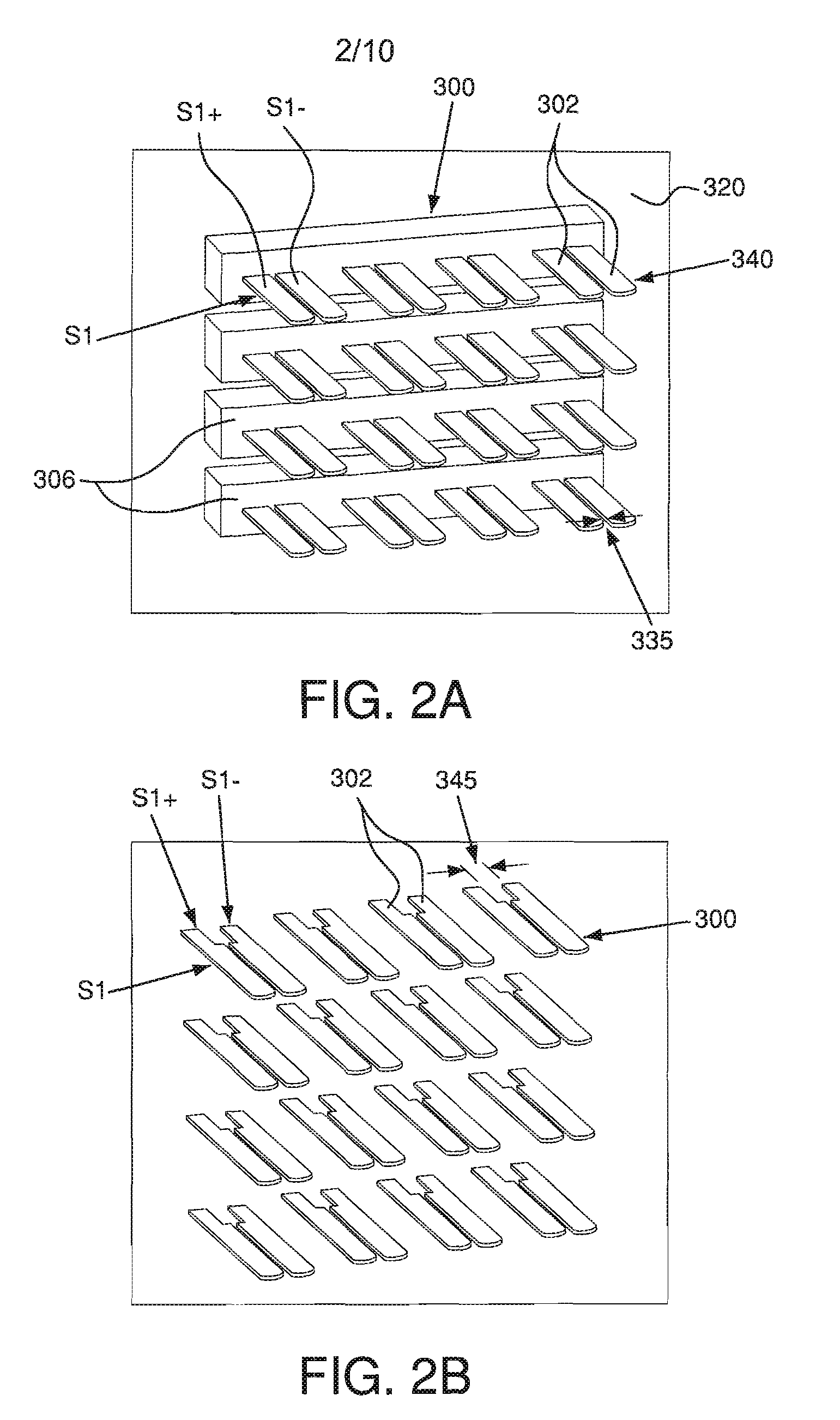Broadside-to-edge-coupling connector system
a connector system and broadside-to-edge technology, applied in the field of broadside-to-edge-coupling connector systems, electrical connector systems, can solve the problems of compromising signal integrity, unsatisfactory cross-talk, and compromising signal integrity, so as to reduce the weight of the connector, reduce the loss of insertion, and reduce the effect of constant impedan
- Summary
- Abstract
- Description
- Claims
- Application Information
AI Technical Summary
Benefits of technology
Problems solved by technology
Method used
Image
Examples
Embodiment Construction
[0021]FIGS. 1A and 1B depict a connector system that includes a first connector 310 having an arrangement of broadside-coupled electrical contacts 312 and a second connector 300 having an arrangement of edge-coupled electrical contacts 302. The connector 300 may be a male, or plug, connector. The connector 310 may be a female, or receptacle, connector. The connector 300 may be a header connector, which may be mounted to a first circuit board 320, which may be a backplane. The connector 310 may be a right-angle connector, which may be mounted to a second circuit board 330, which may be a daughter card. The connector 310 may also be a mezzanine connector. The connectors 300, 310 may be mounted to their respective circuit boards 320, 330 via surface mount technology (SMT), solder ball grid array, press fit and the like.
[0022]An edge-coupled pair of electrical contacts 302 may form a differential signal pair. As shown in FIG. 1B, a linear array 304 of edge-coupled electrical contacts 30...
PUM
 Login to View More
Login to View More Abstract
Description
Claims
Application Information
 Login to View More
Login to View More - R&D
- Intellectual Property
- Life Sciences
- Materials
- Tech Scout
- Unparalleled Data Quality
- Higher Quality Content
- 60% Fewer Hallucinations
Browse by: Latest US Patents, China's latest patents, Technical Efficacy Thesaurus, Application Domain, Technology Topic, Popular Technical Reports.
© 2025 PatSnap. All rights reserved.Legal|Privacy policy|Modern Slavery Act Transparency Statement|Sitemap|About US| Contact US: help@patsnap.com



